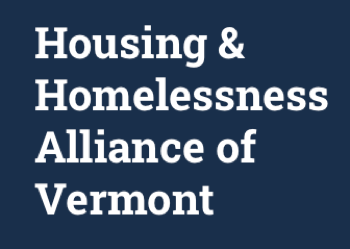Housing & Homelessness Alliance of Vermont (HHAV) Update

GA Emergency Housing Update:
Following the Governor’s veto of the BAA, which would have extended winter weather protections to all statutorily defined “vulnerable” unhoused Vermonters, Governor Scott signed Executive Order 03-25, which waived the 80-night cap for a limited number of GA eligible households. In terms of impact, according to the April Housing Report (Act 113), 303 households, including 366 adults and 59 children, lost their shelter through the GA program after the winter weather protections ended on March 31. According to the most recent DCF data, as of June 2 there are only 1,019 households currently in GA emergency housing, down from approximately 1,450 households during winter weather protections.
In addition, according to a letter released earlier this week by ESD, for households who have been sheltered in a hotel or motel under Executive Order No. 03-25, any days used under this executive order count toward the household’s 80-day limit within a 12-month period.
Here is a HHAV FAQ document on General Assistance Emergency Housing for FY26 (July 1, 2025 - June 30, 2026.
At the Legislature:
Emergency Housing H.91’s conference committee report has been approved by the House and Senate and was sent to the Governor on June 5. It is unclear if the Governor will veto or let go into law. Governor Scott has five days from when he received the bill (excluding Sundays) to either sign or veto the bill. If he takes no action, the bill automatically becomes law.
H.91 would shift the state’s homelessness response system to a regional model led by the CAPs. These changes would include what is currently under HOP/OEO and GA/ESD, with the transition occurring in FY27. In addition, the VT Network would lead the statewide shelter and case management work for people impacted by domestic and sexual violence. The new model would be called the Vermont Homeless Emergency Assistance and Responsive Transition to Housing (VHEARTH).
Here is the H.91 appropriations breakdown of one-time funds (note that the $3M to DCF to enhance capacity for the creation and expansion of emergency shelters and permanent supportive housing capacity was removed by the conference committee):
- $5.085M to DCF for the implementation of the VHEARTH Program to be distributed to the community action agencies;
- $400k to DCF for the statewide organization serving households experiencing or who have experienced domestic or sexual violence (VT Network);
- $515K to the Department of Health (VDH) for Bridges to Health for services to individuals who are experiencing homelessness or at risk of becoming homeless; and
- $1M to DCF for grants to municipalities planning and implementing of services for households that are at risk of homelessness or experiencing homelessness in collaboration with the community action agency serving a municipality’s region.
FY 26 Budget Governor Scott signed the FY26 budget on May 21. Here is a summary of some of the housing and homelessness related provisions in the budget:
Community Housing and Infrastructure Program (CHIP) CHIP would allow a developer, municipality, or other agency to borrow money for infrastructure for a specific housing project and then use the increased tax revenue from the development to pay back the debt. This provision is in S.127.
The S.127 conference committee report was approved by the House and Senate and delivered to the Governor on June 6. We expect the Governor to sign the legislation. We will provide additional details on the legislation.
